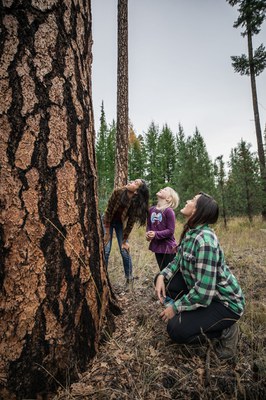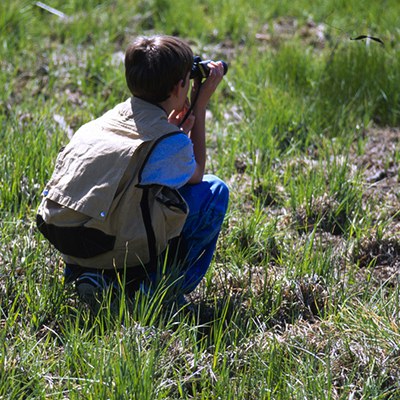Most times when we go out for a walk in nature we bring our business with us. And as we go along, talking or making loud noises, the animals either flee or hide. When we settle in and sit down, our experience in nature changes. We get quiet, slow our breath, and just notice what is all around us! 
The beauty of finding your sit spot is that it can be anywhere. Some people want to choose a place that’s way out in the woods but you can also sit in your own backyard or local park. The key is to look for a spot that you can return to often where you can be without the many interruptions of daily life.
As you make your way to your sit spot, it’s important to be aware that your presence may disturb wildlife. Here are a couple of practices that may help you more mindfully appreciate nature:
Fox Walk
This is a special way of walking, used by trackers, to create the least amount of noise. When walking quietly, you are less likely to scare away the animals.
Put your feet together imagining a straight line between them. Walking along that line, put each foot down blade side first, then let the rest of the foot follow naturally. Watch this video to see someone ‘Fox Walk.’
Owl Eyes
This is a way to use your wide angle or soft vision. It allows you to take in everything at once. Walking through the environment in this way, you will be able to see more and be less disturbing to the wildlife.
Put your hands out in front of your face, fingers pointed together. Without moving your head or your gaze, slowly separate your fingers and move them out towards the sides of your body until you can barely see them. Watch this video for an example of using ‘Owl Eyes.’

In spring, you may discover the ant colony location and notice the tracks of a hungry skunk that has come overnight to dine upon it. As the season changes to summer you could have a chance to see the young quail, in a covey now, happily kicking up dust, or the hawk giving its young their first fishing lessons. And, by fall, you find the light, tan colored orb sack of that same spider attached to a nearby willow branch. In winter, those same ceanothus bushes, now bereft of blooms and bare branched, may have become precious habitat to beautiful migrating finches.
Finally, be sure to share with others what you’ve observed. One of my most dramatic discoveries was to find that the cacophonous sound coming from below my Sit Spot along a local creek was actually river otters in full mating mode. Sharing our experiences through creative mapping, telling stories, or fun tidbits is a great way to remember information and lock in learning! Happy sitting! I can’t wait to hear about what you saw!
Thanks to volunteer Susan Prince for this blog post!
Learn more:
- Inspiring a sense of wonder in kids
- Take a hand lens with you on your next outdoor adventure
- Get to know the nature of your backyard
- Help us protect land for generations to come


